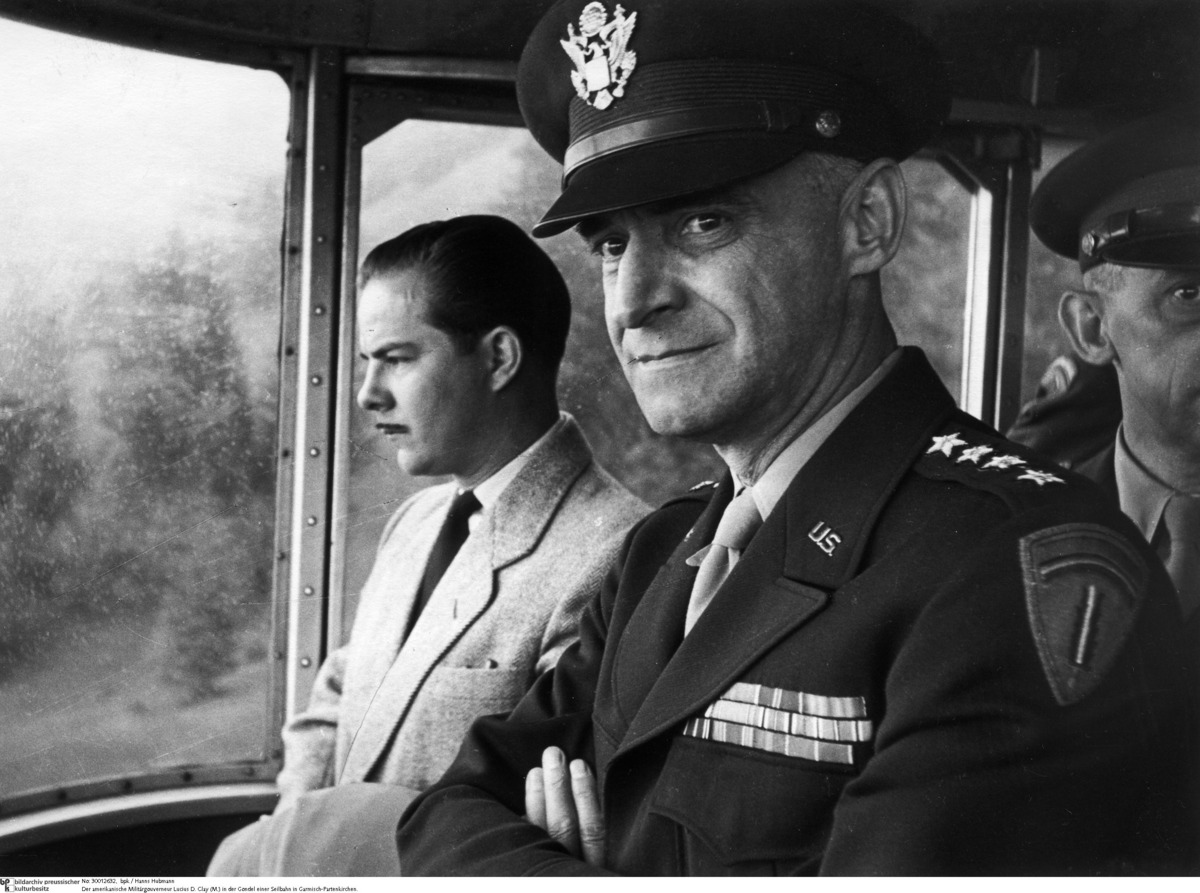Abstract
On March 15, 1947, General McNarney’s former deputy, Lucius Dubignon
Clay (foreground), was appointed to succeed him as supreme commander of
U.S. forces in Europe and military governor of the American zone. In
general, Clay’s goal was less to execute the rigid directive JCS 1067
than to proceed in a manner that was constructive and guided by
improving material conditions on the ground. This is clear in Secretary
of State James F. Byrne’s “Speech of Hope” (September 6, 1946), which
was based chiefly on one of Clay’s memos. The Soviets responded to the
increasingly separate policies in the western zones of Germany,
culminating in the currency reform, with the Berlin Blockade (June
1948-May 1949). Clay, who was an expert on logistics, organized and
coordinated the Berlin Airlift. His work not only ensured that supplies
reached the city, but pointed the way toward future German-American
cooperation. His outwardly reserved but nonetheless trusting
collaboration with German politicians in founding the state of West
Germany won him a reputation as an American “founding father” of the
Federal Republic. For Clay’s grave in the West Point military academy’s
cemetery, the citizens of West Berlin donated a simple gravestone with
the inscription: “We thank the preserver of our freedom.”
